Jared
gamer level 4
2148 xp
2148 xp
followers
18
18
Use my invite URL to register (this will give me kudos)
https://boardgaming.com/register/?invited_by=zetseui
profile badges




recent achievements

I Love Playin' Games
Claim that you have played a game today by clicking the "Played Today!" button on a game page 50 times.
Claim that you have played a game today by clicking the "Played Today!" button on a game page 50 times.

Novice Reviewer
Review 5 games and receive a total of 140 positive review ratings.
Review 5 games and receive a total of 140 positive review ratings.

Observer
Follow a total of 10 other gamers.
Follow a total of 10 other gamers.

Reporter Intern
Earn Reporter XP to level up by completing Reporter Quests!
Earn Reporter XP to level up by completing Reporter Quests!
Player Stats
Critic (lvl 2)
695 xp
695 xp
Explorer (lvl 1)
138 xp
138 xp
Professor (lvl 1)
135 xp
135 xp
Reporter (lvl 1)
125 xp
125 xp
About Me
I Currently reside in Northwest Ohio and I've been board gaming for about 3-4 years. I first started getting into gaming pretty hardcore after playing carcassone though I've always been a fan of games(be it video, card, board, role playing or otherwise)
My favorite types of games usually consist of deck builders or the euro type games. I'm willing to play almost any game at least once.






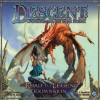






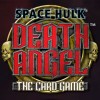

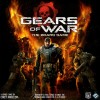








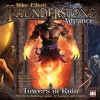

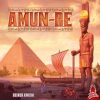







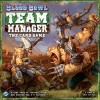










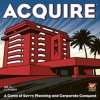










Sentinels of the Multiverse
Sentinals is a cooperative card game where a team of superheroes fight against a evil supervillain. The base game comes packaged with no real good way to store the cards once they’re opened so that is one downfall. The other downfall is that every player needs to track their hit points and they need to track the hit points of the supervillian and their minions. The game doesn’t include any way to do this. There are print offs you can find online that help, but the easiest way is probably using mini poker chips.
Players start off by choosing a hero however they prefer. The game includes 10 different heroes to choose from each with their own flavor, and most of them are easy to see which superhero they were modeled after.
The players then choose a villain that they will be fighting and also a location where they will be fighting.
After the first player is determined they flip one of the villain cards and do what it says. After the villain and his cronies will attack if able and then its on to the superheroes turns.
Each player can play one card from hand, some are one time use and are discarded and others persist and stay to buff the hero. After this they have a chance to use one of their abilities. At the start the hero card includes one ability and they gain more through cards played, so your hero will become stronger as the game progresses. After they do their ability (which isn’t always attack) they draw a card.
After all players have taken their turn they reveal a location card and do what the card text says if able. Then they start back over with the villains turn until either the heroes are defeated or the villain is defeated.
This game is super simple and there are no real big elements to make it complex or symbols to be confusing. You open the small box and you have cards and that’s it nothing else, which is a big nose turner to a lot of people. And rightly so for 39.95usd msrp they could have included some type of counters, and it is near impossible to put the cards back into the box once they’re opened. That being said the game is very fun as a party game and for newbies to games.